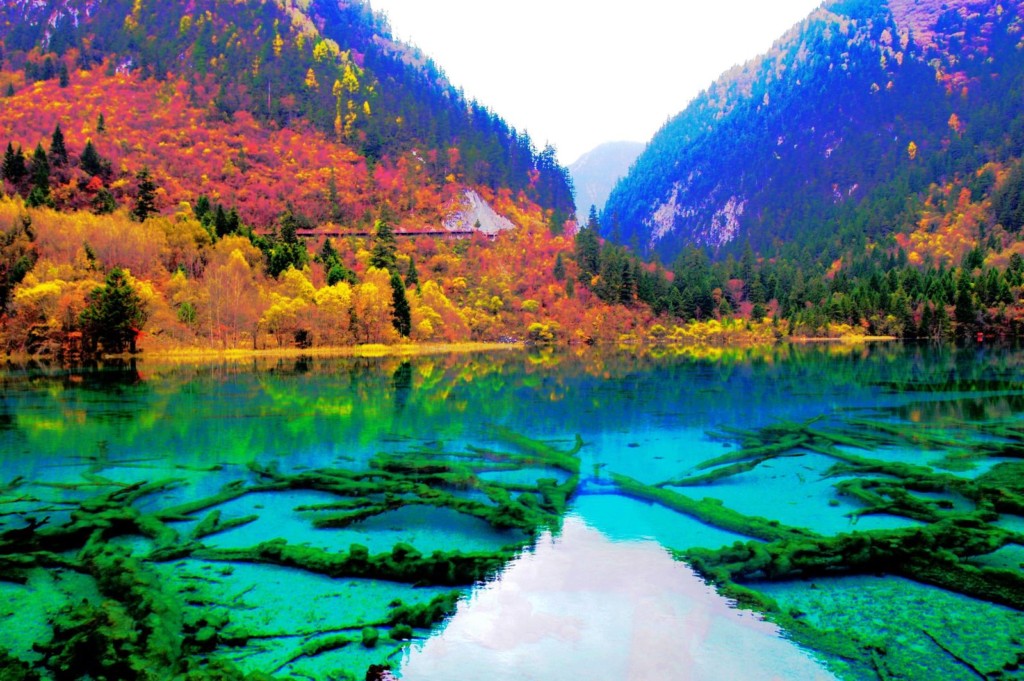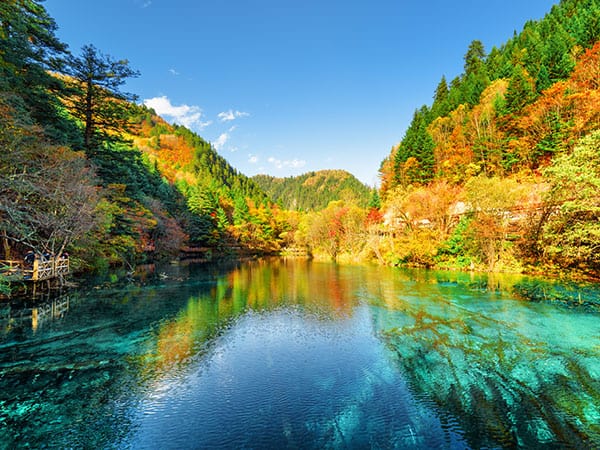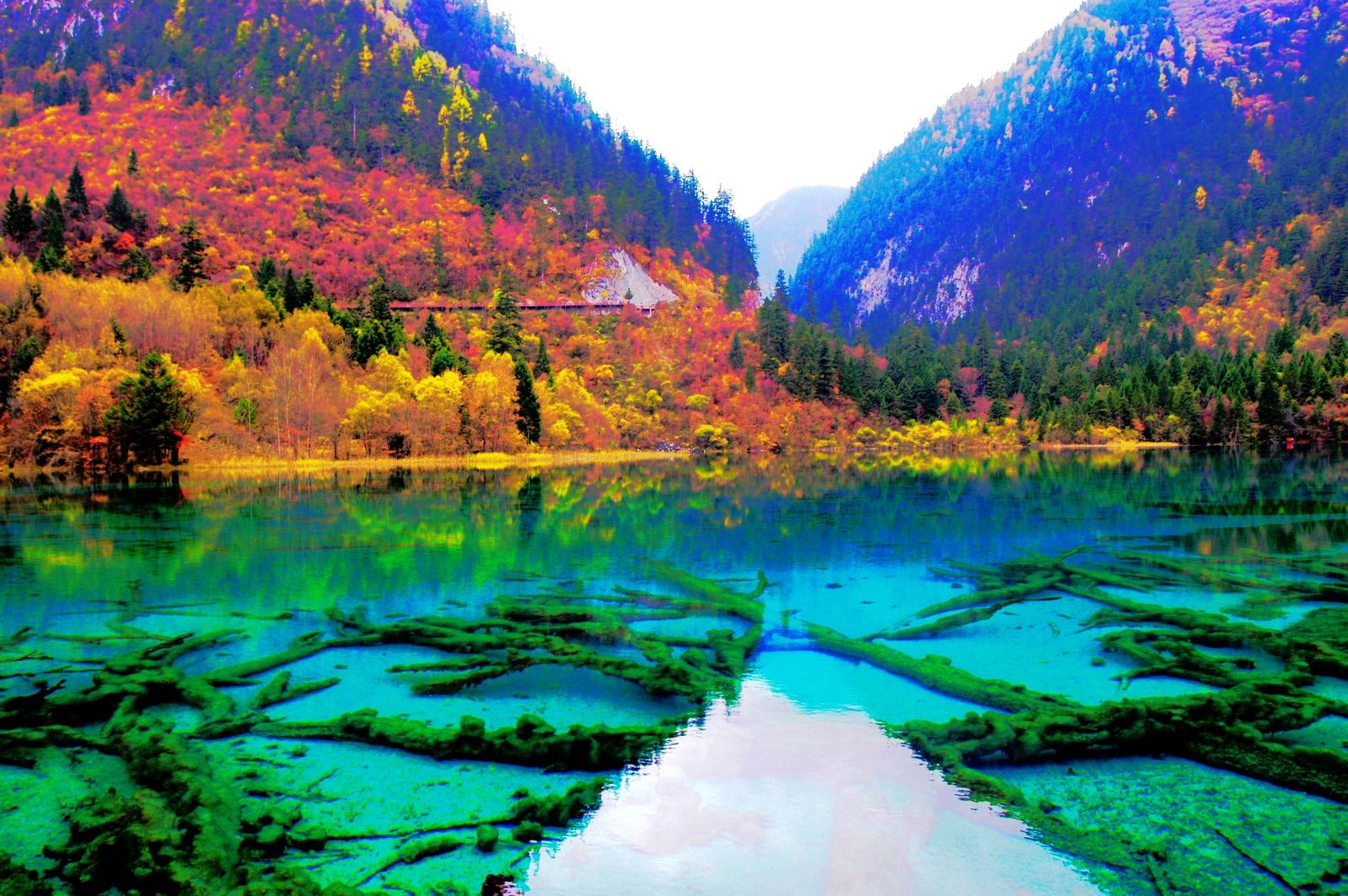Jiuzhaigou is one of those places in China that over a billion people aspire to visit at least once in their life time. Although this provides obvious economic benefits to rural communities in Northern Sichuan, it can be very much a double edged sword. The sublime water-scapes and natural beauty that are nestled between steep valleys on the edge of the Eastern Himalaya in Northern Sichuan have been recognised as a UNESCO World Heritage Site since 1992 and have become China’s premier natural tourism destination. It might come as a surprise that it took until 2015 for the region’s first eco lodge to open.
The Tibetan culture in Jiuzhaigou differs a lot to that of other areas of Amdo where people are largely nomadic. Being surrounded by high mountains means that people have moved their live stock herds up and down the mountains season to season for generations, unlike on the Tibetan Plateau where herders might move hundreds of kilometers season to season. This lack of movement has led to the Tibetan lifestyle, culture and language in Jiuzhaigou to develop quite uniquely. This is not something that most tourists would be aware of however. But some local families have been slowly changing this trend over the last decade.
The tourism set-up in Jiuzhaigou leads most tourists, who are generally on the mass tourism trail, to miss out on any real Tibetan exposure, experience or interaction. The rapid increase in tourism since the Jiuzhaigou Airport (China’s 3rd highest after Chamdo and Lhasa in Tibet) was opened in 2003 has led to a rapid tourism infrastructure development. The masses of tour groups arriving by air and road (and soon by rail) need to be accommodated and this has led to a strip development of low quality accommodation, restaurants and ‘cultural performances’.
Long standing sister park relationships such as that with Yosemite National Park in California, have helped in developing a model of sustainable mass tourism inside the national park. This is in contrast with the not-so-sustainable strip developments outside of the national park boundaries. Eco tourism in Jiuzhaigou National Park has been surprisingly slow to develop. After many years of planning and cooperation with local communities, an eco tourism programme was launched in 2009 that includes hikes to abandoned villages and the iconic 3 day sacred mountain pilgrimage route. But outside of the national park, eco tourism has not appeared to be a priority, or even on the radar for the tourism authorities or the locals.
Local Buddhists believe in natural gods and so are connected, spiritually as well as practically, to the landscape. Local stories of wars, fairies, demons and heros bring the landscape to life…for those who are lucky enough to hear them. The rise in demand from international, and increasingly from domestic tourists, for a richer Tibetan experience is slowly changing the way local people see the connection between their culture and the tourism industry. Tourists are no longer satisfied to just come, photograph the scenery, guzzle cheap barley wine and leave.
Yak herding families with little to no formal education are now starting to get involved in the tourist facing part of the tourism industry. Zhuo Ma’s Jiuzhaigou Home Stay opened their basic mountain home to guests in 2009. It is a basic house with four bedrooms situated in the spectacular and quiet valley, removed from the noisy tourist strip by the entrance to the national park. The Home Stay allows tourists to see how local people live, to learn about Tibetan culture and the local community’s way of life and has acted as a catalyst for further eco and experience tourism development. For the local subsistence farmers and herders of the village, seeing tourists genuinely appreciating and embracing the local culture is a source of huge pride. Local villagers benefit directly from these tourists by providing horse riding, guiding and driving services as well as providing meat, vegetables, fruit and honey.
More and more families are getting involved in this value-added end of the tourism industry which is a win-win for the community and for tourists. The demand for these experiences has led to a local family opening A Bu Lu Zi Eco Lodge, the region’s first eco lodge, in 2015. An eco lodge is something that no one would have considered 10 or even 5 years ago as big hotels that cater for most of the millions of tourists per year make the big money.
Local Tibetans now realize that tourists are interested in their culture which makes them even more proud of it and eager to protect it. They see that there is interest in and a demand for local stories, local food and local hand-crafts made in the traditional way. They now realize that tourists are happy to know that the local community, culture and environment will benefit from their stay.
It will take time, but this may just be the turning point for touism in Jiuzhaigou, Northern Sichuan and potentially China.
Where to stay:
A Bu Lu Zi Eco Lodge.
The first eco lodge in the region. Luxury, eco friendly accommodation located 15km from the national park entrance. www.AbuluziEcolodge.com
Price: 480 RMB including free transport to the national park.
Zhuo Ma’s Jiuzhaigou Home Stay.
This has been a favourite of foreign tourists for the last 7 years. Make sure to try the yak butter tea! www.ZhuoMaJiuzhaigou.com
Price: 200 RMB per person per night. Breakfast, lunch & dinner included.
Self Tour Youth Hostel, Jiuzhaigou.
One of the many similar youth hostels in Peng Feng Village, a 15min walk from the national park entrance.
Price: 50 – 300 RMB.





